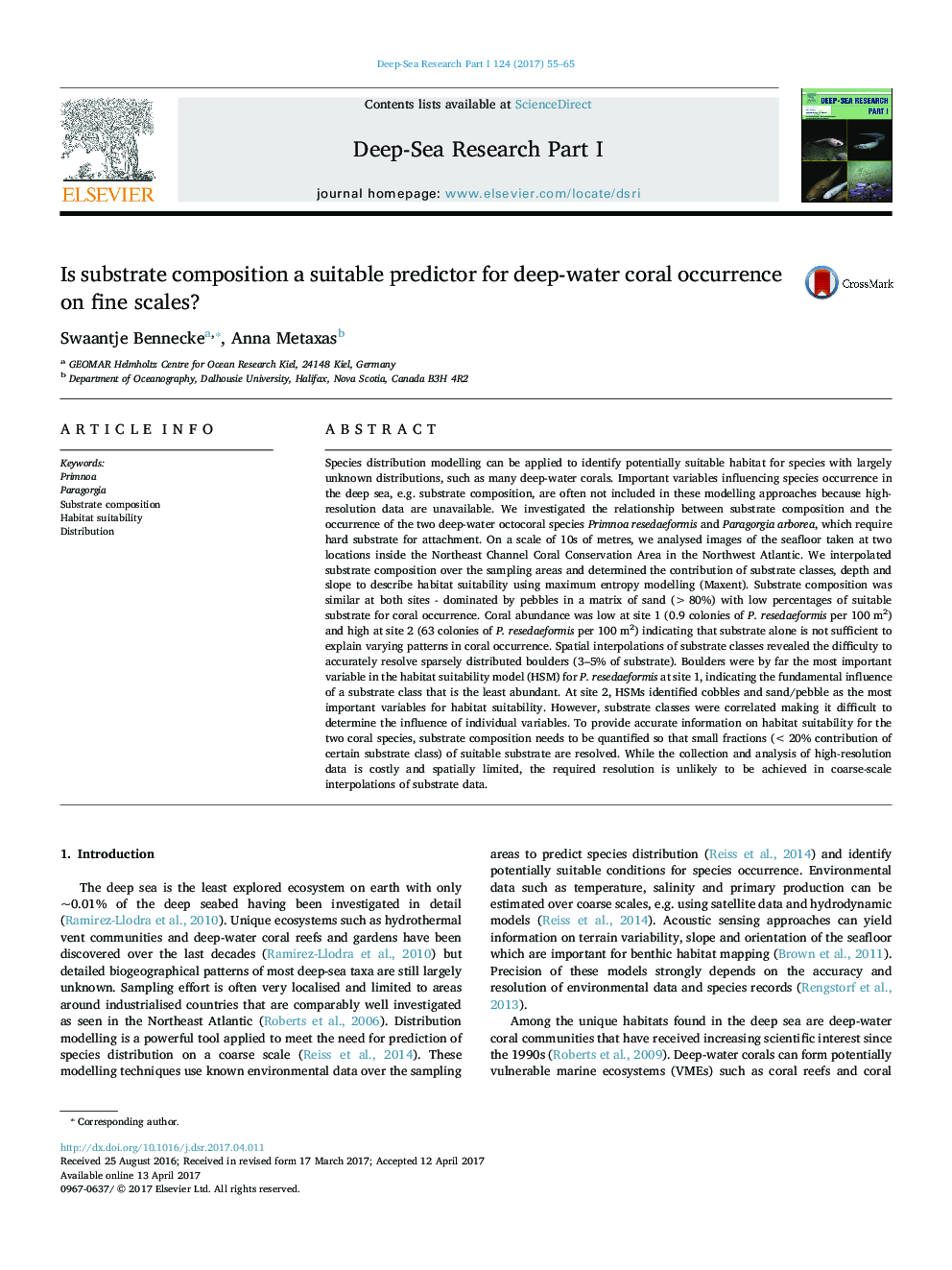| کد مقاله | کد نشریه | سال انتشار | مقاله انگلیسی | نسخه تمام متن |
|---|---|---|---|---|
| 5764696 | 1626306 | 2017 | 11 صفحه PDF | دانلود رایگان |
- Substrate composition alone does not describe suitable habitat adequately.
- Secondary and tertiary substrate classes are important to predict coral habitat.
- Interpolations of substrate data are prone to missing fine-scale features.
Species distribution modelling can be applied to identify potentially suitable habitat for species with largely unknown distributions, such as many deep-water corals. Important variables influencing species occurrence in the deep sea, e.g. substrate composition, are often not included in these modelling approaches because high-resolution data are unavailable. We investigated the relationship between substrate composition and the occurrence of the two deep-water octocoral species Primnoa resedaeformis and Paragorgia arborea, which require hard substrate for attachment. On a scale of 10s of metres, we analysed images of the seafloor taken at two locations inside the Northeast Channel Coral Conservation Area in the Northwest Atlantic. We interpolated substrate composition over the sampling areas and determined the contribution of substrate classes, depth and slope to describe habitat suitability using maximum entropy modelling (Maxent). Substrate composition was similar at both sites - dominated by pebbles in a matrix of sand (>80%) with low percentages of suitable substrate for coral occurrence. Coral abundance was low at site 1 (0.9 colonies of P. resedaeformis per 100Â m2) and high at site 2 (63 colonies of P. resedaeformis per 100Â m2) indicating that substrate alone is not sufficient to explain varying patterns in coral occurrence. Spatial interpolations of substrate classes revealed the difficulty to accurately resolve sparsely distributed boulders (3-5% of substrate). Boulders were by far the most important variable in the habitat suitability model (HSM) for P. resedaeformis at site 1, indicating the fundamental influence of a substrate class that is the least abundant. At site 2, HSMs identified cobbles and sand/pebble as the most important variables for habitat suitability. However, substrate classes were correlated making it difficult to determine the influence of individual variables. To provide accurate information on habitat suitability for the two coral species, substrate composition needs to be quantified so that small fractions (<20% contribution of certain substrate class) of suitable substrate are resolved. While the collection and analysis of high-resolution data is costly and spatially limited, the required resolution is unlikely to be achieved in coarse-scale interpolations of substrate data.
Journal: Deep Sea Research Part I: Oceanographic Research Papers - Volume 124, June 2017, Pages 55-65
